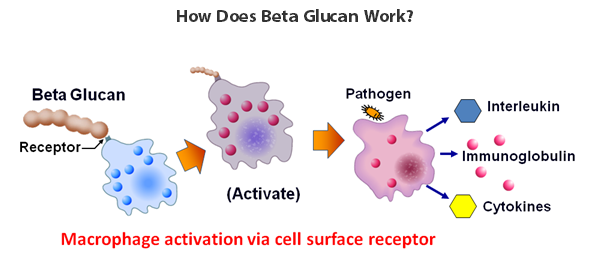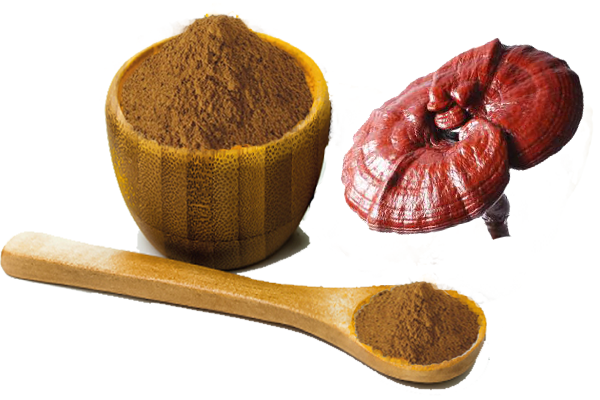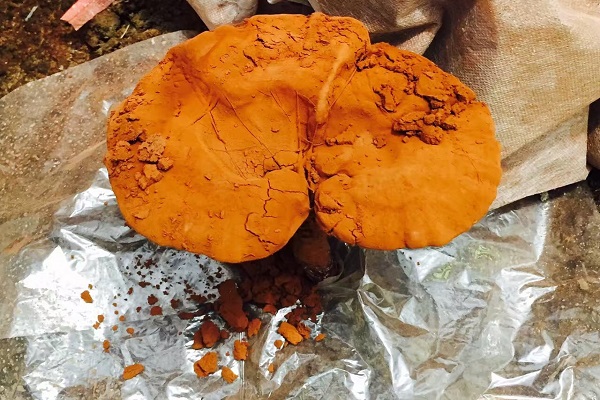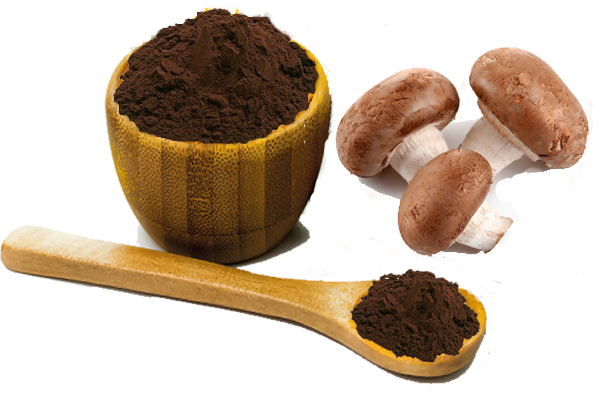
Ganoderma Lucidum Extract Beta-D-Glucan 10% 20% 30%
Ganoderma Lucidum Mushroom Extract Beta-D-Glucan 10%, 20%, 30% by Enzyme solution-UV with analysis meets the EP, USP, JP, CP....
Ganoderma Lucidum Beta Glucan/ Reishi Mushroom Extract Beta Glucan
Latin Name: Ganoderma Lucidum Karst
Extracting Part: fruit body
Supplied Purity: Ganoderma Lucidum Beta Glucan 10%, 20%, 30% by Enzyme solution-UV
Other purity supplied like polysaccharides 10%~50%, triterpene 1%~8%, reishi spore powder, reishi spore oil

ganoderma lucidum beta glucan from MIGU
Glucan is a kind of natural polysaccharide compound. Its molecular weight was from thousands to tens of thousands of years ago. It is a water-soluble or insoluble particle, which exists in the cell wall of special kinds of bacteria, yeast and mushroom, and can also be found in the coating of higher plant seeds. Beta glucan is a kind of natural substance which can not be synthesized artificially. Many physical experiments and clinical reports show that beta glucan plays a very important role in the maintenance of human health and the treatment of diseases.
Glucan is a kind of high molecular polysaccharide polymerized from glucose monomer, which can be divided into α type and β type. The common α – glucan is mainly composed of starch, dextrin, glycogen, etc. at present, the pharmacological research shows that its bioactivity is low, and β – glucan is mainly composed of β – (1-3) – D, β – (1-4) – D, β – (1-6) – D, which exists in some microorganisms and plants. In recent decades, more and more attention has been paid to the research of Polysaccharide from edible and medicinal bacteria. β – glucan, as an efficient biological response regulator (BRM), has important research value and broad development prospects.
The Basic Structure of β – Glucan on Fungus/mushroom extract
Now it is known that the main chain of β – glucan is mainly β – (1-3), such as Ganoderma lucidum, Flammulina velutipes, Lentinula edodes, Schizophyllum commune, The main chain of Ganoderma β – glucan is mainly β – (1-3), which has β – (1-6) residue side chain. The β – glucan of Grifola frondosa is similar to that of ganoderma, both of which have low branching degree. The β – glucan of the fruiting body of Flammulina velutipes is similar to that of Ganoderma lucidum, The main chain is β – (1-3) – D-glucose, and the side chain is β – (1-6) – D-glucose residue. The β – glucan of the fruiting body of Ganoderma sessile is different. Although the main chain is β – (1-3) – D-glucose, it is highly branched. Each two main chains have a side chain of β – D-glucopyranosyl in 4 branches, and some in 6 branches.
Lentinan is an important member of the (1-3) – β – D-glucan family. Lentinan and Schizophyllum polysaccharide have two or one β – (1-6) – D-glucopyranosyl side chain for every five or three main chain glucose units. They have similar structure and most of their characteristics. Hydrangea army β – glucan (SCG) is a 6-branched β – (1-3) – glucose with one branch per three main chain units, which has high antitumor activity. There are also some edible and medicinal bacteria β – glucan with β – (1-6) – glycoside linkage as the main chain. For example, the main chain of Russula albonigra β – glucan is connected by β – (1-6), and each of the three main chain glucose units has a side chain containing two β – (1-3) – D-glucopyranosyl and one terminal β – D-glucopyranosyl in three branches. It has been reported that the β – glucan of Entoloma lividoalbam is similar to the β – glucan of Flammulina velutipes. The main chain is also connected by β – (1-6), and the side chain is slightly different. For every three main chain D-glucose units, there is a side chain containing three β – (1-3) – D-glucopyranosyl and one terminal β – D-glucopyranosyl in three branches.
Beta Glucan: The Best Type of Polysaccharides
The medicinal properties of many species of mushroom have been valued and used in Traditional Chinese Medicine for centuries. More recently studies have demonstrated that the key active compounds with imunomodulatory activities such as polysaccharides, phenolic compounds, polysaccharopeptides, proteins, lipid components and terpenoids. These immunomodulatory effects and subsequent potential for therapeutic benefits are generating a renewed interest in the scientific investigation of medicinal mushrooms, represented in the market by continual steady increases in worldwide sales.
Beta-D-glucans are the most important compounds in the polysaccharides. In the mushroom polysaccharides mainly contains beta glucan and alpha glucans. Different with oats & grains molecule beta glucan are (1-4)-beta-glucans, the mushroom beta glucan molecule are (1-3)(1-6) beta-D-glucans which are specific in fungus and yeast. The beta glucan activates the immune system and might even have anticarcinogenic properties.And another ingredients in polysaccharides are alpha-glucans which like glycogen, pullulan, dextran and starch, most of time we called are the filler of mushroom products. And the dextran and starch is very common polysaccharides that is find in many products or foods like potatoes, corn, rice and grains.
From above we can see not high polysaccharides means high quality or great effective function. Only high beta glucan purity in mushroom means high effecitive in function.
Pharmacological Effects of Glucan from Fungus Extract
Antiviral and antibacterial effects
The β – glucans of many edible and medicinal bacteria advise antiviral and antibacterial actions, such as anti hepatitis B virus, herpes virus, HIV, plant pathogenic virus and Newcastle disease virus, as well as anti Bacillus subtilis, Escherichia coli, Staphylococcus aureus and yeast, etc Wang Wenxiu et al. Showed that Grifola β – glucan had a significant inhibitory effect on the proliferation of herpes simplex virus type I on veroe6 cells, and its IC50 was 5.18mg/ml, which could significantly inhibit the CPE effect caused by the virus. Gu et al. Reported that Grifola frondosa polysaccharide can inhibit the replication of hepatitis B virus when used alone; when combined with interferon A, it can significantly enhance the antiviral effect of interferon A, in addition, the edible and medicinal bacteria β – glucan can also inhibit the plant pathogenic virus. Niu Xiaoyi et al determined marasmiellus and rosaceus, Grifola frondosa, Ganoderma lucidum, Polyporus umbellatus, Auricularia auricula, Cordyceps miliaris, shiitake, lion’s mane, The results showed that 10 kinds of polysaccharide of edible and medicinal fungi had a certain inhibitory effect on CMV, among which Grifola frondosa polysaccharide, Ganoderma lucidum polysaccharide, Coriolus Versicolor Polysaccharide and Armilaria mellea polysaccharide had the most significant inhibitory effect. GUO and other studies have shown that compared with the natural letinous edodes beta glucan, the sulfidation of letinous edodes polysaccharides can enhance the immune effect of animal Newcastle disease vaccine, significantly increase the number of serum antibodies and leukocytes, and reduce incidence rate and mortality of Newcastle disease virus. The sulfated lentinan prepared by Wang shunchun, et al. Showed good anti HIV activity through preliminary test by National Cancer Research Center of the United States. Wang et al found that sulfated lentinan and lentinan could significantly inhibit the increase of IBV, but sulfated lentinan was more effective. In addition, sulfated Lentinus edodes β – glucan can also replicate and fuse all the time HIV virus through virus cells. In the aspect of bacteriostasis, lentinan can be used to treat the infection of Mycobacterium tuberculosis, make the sputum of drug-resistant tuberculosis patients turn negative, and increase the phagocytic activity of neutrophils in patients’ peripheral blood. Lentinan len and Len 1 can inhibit Bacillus subtilis, Escherichia coli, Staphylococcus aureus and Saccharomyces cerevisiae to some extent, but they have no inhibitory effect on root enzyme and Aspergillus niger.

ganoderma lucidum beta glucan
Immunoregulation
Through binding with macrophages, neutrophils and polysaccharide receptors on the surface of lymphocytes, β – glucan of edible and medicinal bacteria affects the process of cell information transmission, thus affecting the gene expression and lymphocyte function of these cells and regulating the immune function of the body. It was found that oral administration of Ganoderma lucidum ferment (crude polysaccharide) could significantly increase the spleen index and thymus index of mice, and a pure Ganoderma lucidum glucan isolated from Ganoderma lucidum ferment liquid could significantly promote the increment of B and T lymphocytes of mice. It has been reported that Ganoderma lucidum and Hericium erinaceus β – glucan can significantly improve the activity of macrophages in mice abdominal cavity, promote the production of no; Ganoderma lucidum polysaccharide can also enhance the activity of NK cells in spleen of normal mice and tumor bearing mice, significantly promote the secretion of tumor necrosis factor (TNF – α) and interferon – γ (IFN – γ). After oral administration of β – glucan of Grifola frondosa to SPF mice, the phagocytic function of phagocytes and the immune function of cells and immune organs in SPF mice were significantly improved; meanwhile, Grifola frondosa glucan could promote the secretion of IL-6 in macrophages (RAW264.7) and the transcription level and content of IL-6 mRNA.
β – glucan can also promote the increment of B lymphocyte and the production of IgM antibody, and improve the humoral immunity. In addition, membrane Ig and TLR-4 are immune receptors of ganoderma polysaccharide activated B cells, and TLR-4 is also related to ganoderma polysaccharide activated macrophages.
In general, there are many studies on the pharmacological effects of β – glucan, but the mechanism of regulating immunity is not clear.
Antitumor Activity
The polysaccharide of Ganoderma lucidum fruiting body has obvious inhibitory effect on S180 (osteosarcoma), HepS (liver cancer), EAC (ascites cancer) and bb16bl6 (melanoma). Our previous experiments showed that Ganoderma lucidum mycelium polysaccharide obtained by fermentation also has antitumor effect, and the inhibition rate of HepS (liver cancer) in mice can reach 57.91% after oral administration of samples. In addition, it has been reported that the expression of H-2Db (MHC class I antigen) and costimulatory molecules B7-1 and B7-2 on the cell surface of B16F10 melanoma cell line increased after treatment with Ganoderma lucidum polysaccharide, which promoted the proliferation of lymphocytes induced by B16F10 melanoma cell line, the expression of lymphocyte CD69 and FasL, and the secretion of interferon γ. The results suggest that Ganoderma lucidum can not only regulate the immune system and enhance the non-specific immunity, but also achieve the purpose of anti-tumor. Colleagues understand that Ganoderma lucidum can enhance the immunogenicity of Mid Autumn Festival, improve the stimulation ability of tumor cells to the immune system, and kill tumor cells through specific immunity.
Shiitake mushroom β – glucan can effectively compound the occurrence of chemical or viral tumors. It has good efficacy in the treatment of gastric cancer, colon cancer, breast cancer, lung cancer and other aspects, and can prolong the survival time of tumor patients, especially gastric cancer and colorectal cancer. The antitumor activity of Grifola frondosa β – glucan is related to the activation of macrophages by Dectin-1 / Syk / NF – γ B signal.
According to the existing research, the anti-tumor effect of β – glucan of edible fungus is mainly achieved by enhancing the host immune regulatory function, such as activating the immune cells of the body, promoting their value-added and differentiation, increasing the number of effector immune cells, promoting the immune cells to secrete cell hormones, so as to achieve the anti-tumor effect. However, the specific anti-tumor mechanism needs further study.
Antioxidation and Anti-aging
A large number of studies have shown that bacterial β – glucan has strong antioxidant and anti-aging effects. Pourahmad et al, Bacterial β – glucan is similar to silymarin, a known antioxidant and free radical scavenger, with a smile concentration of 138nmol / L β – glucan can successfully protect hepatocytes against cell lysis and all the toxic endpoints of oxidative stress caused by depleted uranium, including the formation of reactive oxygen species, glutathione depletion, mitochondrial membrane potential reduction, lysosomal membrane rupture and increased activity of Caspase-3, which proves that β – glucan has the ability of antioxidation and clearing free radicals in vivo.
Kao et al. Showed that Ganoderma lucidum β – 1,3-glucan (LMG) has significant antioxidant capacity. After treatment of RAW264.7, LMG can significantly reduce the amount of ROS produced by H2O2, and LMG can also inhibit the activity of sphingomyelinol (SMase), thus inhibiting cell death induced by H2O2. In addition, Flammulina velutipes, Flammulina velutipes, and Hericium erinaceus β – glucan have antioxidant effects. The basic mechanism of anti-oxidation and anti-aging effect of β – glucan is to improve the activity of antioxidant enzymes, such as superoxide dismutase (SOD) and glutathione peroxidase (GSHPx), and inhibit the activity of lipid peroxidase, so as to protect cell membrane and delay aging.
Hypoglycemic and Hypolipidemic effects
In recent years, it has been found that β – glucan, a kind of edible and medicinal bacteria, has good activity in reducing blood sugar, blood lipid, diabetes and cardiovascular diseases.
Kanagasabapathy et al. Showed that P. sajor caju polysaccharide, rich in β – glucan, significantly reduced the amount of protein carbonyl and lipid hydroperoxides, and significantly increased the 5-adenosine-phosphate activated protein kinase subunit γ – 2 (pkrag2) and The expression of pkrag3 indicated that polysaccharide could be used as an effective activator of protein kinase (AMPK) and had the pharmacological function of traditional Chinese medicine in the treatment of diabetes. The study of Nazare et al showed that 5g β – glucan per meal had a better effect on the regulation of postprandial blood glucose and insulin in overweight people.
In the current research, the mechanism of β – glucan regulating blood glucose mainly includes the following three aspects: one is to protect islet B cells, repair the pathological changes of islet B cells, improve their functional characteristics, and then regulate blood glucose; the other is to control the main pathogenesis of type II diabetes and improve insulin resistance (IR); The third is to increase the viscosity of gastrointestinal contents, delay the emptying of gastrointestinal tract and affect its normal peristalsis, affect the activity of digestive enzymes and improve glucose metabolism in the process of food digestion.
In addition, β – glucan can effectively regulate blood lipid content. Liu Ying et al. Found in clinical research that β – glucan g could significantly reduce serum cholesterol, triglyceride and LDL levels in patients with hyperlipidemia, and it could also raise the level of HDL, which indicated that β – glucan had a significant effect on hyperlipidemia, β – glucan can effectively enhance coronary artery skills, expand coronary flow, enhance myocardial oxygen supply, reduce blood lipid content, prevent arteriosclerosis and improve blood circulation.
Antithrombotic and Anticoagulant effects
antithrombotic and anticoagulant drug research and development is one of the main research focuses at present. In terms of anticoagulant polysaccharide, heparin polysaccharide is widely used in clinic. Therefore, the search for heparin substitutes is one of the main research topics. Wang Chenglong et al reported that Auricularia auricula polysaccharide has anticoagulant effect in vitro, and obtained the best condition of anticoagulant effect. Guo Sufen et al. Showed that the area of aortic plaque in the New Zealand white rabbits fed with Auricularia auricula polysaccharide was significantly smaller than that in the control group. The results of transmission electron microscopy and immunohistochemistry showed that the endoplasmic reticulum and mitochondria of smooth muscle cells in the atherosclerotic plaque of the white rabbits in the high cholesterol model group were increased, which were mainly synthetic phenotypes, while the smooth muscle cells of the white rabbits in the experimental group were increased In addition, the expression of bFGF and PDGF in plaque decreased, suggesting that Auricularia auricula polysaccharide has significant anti as effect. In addition, Ganoderma lucidum polysaccharide can significantly prolong the clotting time and bleeding time of mice, and can significantly reduce the content of fibrinogen, and can significantly prolong part of thromboplastin time.More Scientific research and development for Ganoderma Lucidum Beta Glucan , please check here
MIGU’s Organic Ganoderma Lucidum Planted Base

reishi planting base













